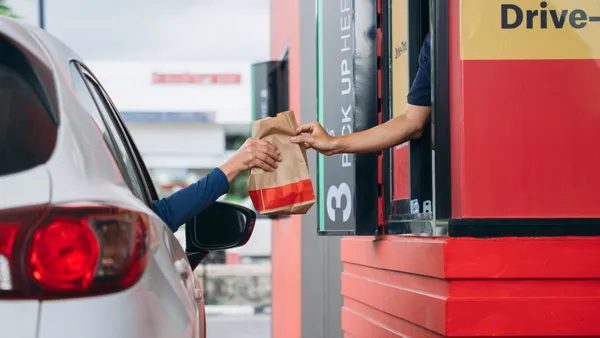Restaurant owners entered 2024 feeling optimistic, according to data from the Square 2024 Future of Restaurants report. The industry has embraced technology solutions to tackle staffing, process, and efficiency challenges. Now, restaurant operators across regions have fresh priorities to stay competitive and grow their businesses.
To understand restaurant operators’ current goals and challenges, as well as what customers want from dining experiences this year, Square teamed up with Wakefield Research to survey 2,000 restaurant owners and managers and 4,000 customers across the U.S., UK, Canada, and Australia.
After analyzing survey results, insights from the Square restaurant's team, and interviews with restaurateurs across regions, here are the most compelling trends shaping the food and beverage industry. For a more in-depth look at these 2024 industry trends, download the full 2024 Future of Restaurants report.
Technology and automation tools continue to maximize staff efficiency.
Continuing a trend from last year, restaurant owners rely on technology and automation tools to help with staffing-related challenges, even as labor shortages start to ease up. All (100%) surveyed respondents said they use technology and automation tools to help fill critical gaps when they’re not fully staffed. That goes for both front-of-house and back-of-house duties: accepting orders as they come through multiple channels, taking payments, managing inventory, preparing food, and more.
It’s not likely restaurants will decrease their investment in automation tools this year. In fact, to stay competitive, 37% of surveyed restaurant owners said they plan on adding automation to overcome staffing shortages over the next twelve months. This investment isn’t just helping owners keep their businesses afloat: 40% of restaurant owners with more than three locations have seen increased profits due to investing in automation.
Restaurant owners are focused on going greener.
Now restaurant owners are turning their attention inward and focusing on how they can improve their business for the better, specifically by using more environmentally sustainable sourcing and operations. To accomplish this goal, we may see more restaurants replace single-use plastic with compostable packaging. Others might opt for imperfect produce — fruits and vegetables that are oddly shaped, have blemishes, or are slightly bruised — to combat food waste. Some business owners may choose to source their ingredients locally to reduce carbon emissions associated with transportation and help support sustainable farming initiatives.
Not only do these approaches benefit the planet, but for restaurants, it’s a leading business strategy —39% of respondents said they plan to use more environmentally sustainable sourcing and operations to stay competitive this year. Why? Consumer habits are evolving, and more buyers are purchasing goods with sustainability claims. For instance, surveyed customers noted specifically that locally sourced food would increase their interest in a new restaurant.
Customer data will guide menu and marketing decisions.
Another 39% of surveyed restaurant owners plan to use data insights to better understand what their customers want as a method for staying competitive. Having a better picture of guest preferences is key for restaurants to ensure they’re offering menu items and additional merchandise that will sell.
Abdallah El Chami, owner of modern Middle Eastern quick-service restaurant Superbaba, says, “There are a minority of people that love [pickled turnip] and a majority that really hate it, and so they would remove it [from the wrap]. It got to the point where I said, ‘These are very expensive to make; they require a ton of labor, and [through analytics] Square is telling us that tons of people are asking to take it out.'”
In addition to being able to tailor menus to guest preferences, having data insights about spending habits and consumer behavior can also help inform stronger marketing efforts, which is another top priority for restaurant owners this year.
Owners will invest in innovative, dynamic technology options.
It’s no secret that restaurants have already heavily embraced technology solutions. Technology powers fundamental restaurant operations, from scheduling shifts and communicating with staff to taking orders table-side, at the counter or via a kiosk, and processing orders that come online or in person.
Customers have embraced restaurant technology adoption. Compared to last year, consumers’ preferences for contactless payment methods, digital reservation processes, and mobile wallet apps have all increased.
Over the next twelve months, we can expect restaurants to invest in even more technology to appeal to customer preferences and reach their business goals. Restaurant owners specifically crave tools that provide better insights that they can use to connect with their customers, integrate with other solutions, and receive real-time information about the health of their business. This means owners will be drawn to more mature and dynamic solutions that help them not just run their business but also improve how things operate. Newer technology solutions have also captured restaurant owners’ attention. For instance, respondents believe AI-based tools and automations could help with duties like food delivery and management, and many are considering implementing them to help with order processes.
Exploring new revenue streams remains a top priority for the vast majority.
Restaurants are still focused on branching out to offer additional products and services beyond their core offerings in 2024. Last year, around half (43%) of restaurant owners added new products or services to their businesses, compared to only 34% in 2022. In 2024, the vast majority (90%) of restaurants plan to start up new revenue streams outside their core offerings, which could help with increasing competition. For many restaurants, the move toward multihyphenate retail isn’t a survival tactic in an uncertain economy; it’s a means of differentiating their businesses and deepening their customer relationships.
“The Fricken Sauce and Satay Sauce are our top sellers, outselling our nearest two commercial items by over 400%. By offering these items as retail products, our customers can enjoy them at home, thus strengthening our brand presence,” said Mo Saad, co-owner at Fricken.
Overall, restaurant owners across regions and business types are focused on expansion this year. The majority are turning to technology to uplift their team, strengthen their business, and connect with their customers. By adopting the right technology tools, owners will have more time to refine their approach and continue to evolve their offerings and practices in response to shifting customer preferences.
Want a deeper look into how restaurants are innovating in 2024? Get more information on these popular restaurant trends in our 2024 edition of the Future of Restaurants report.










